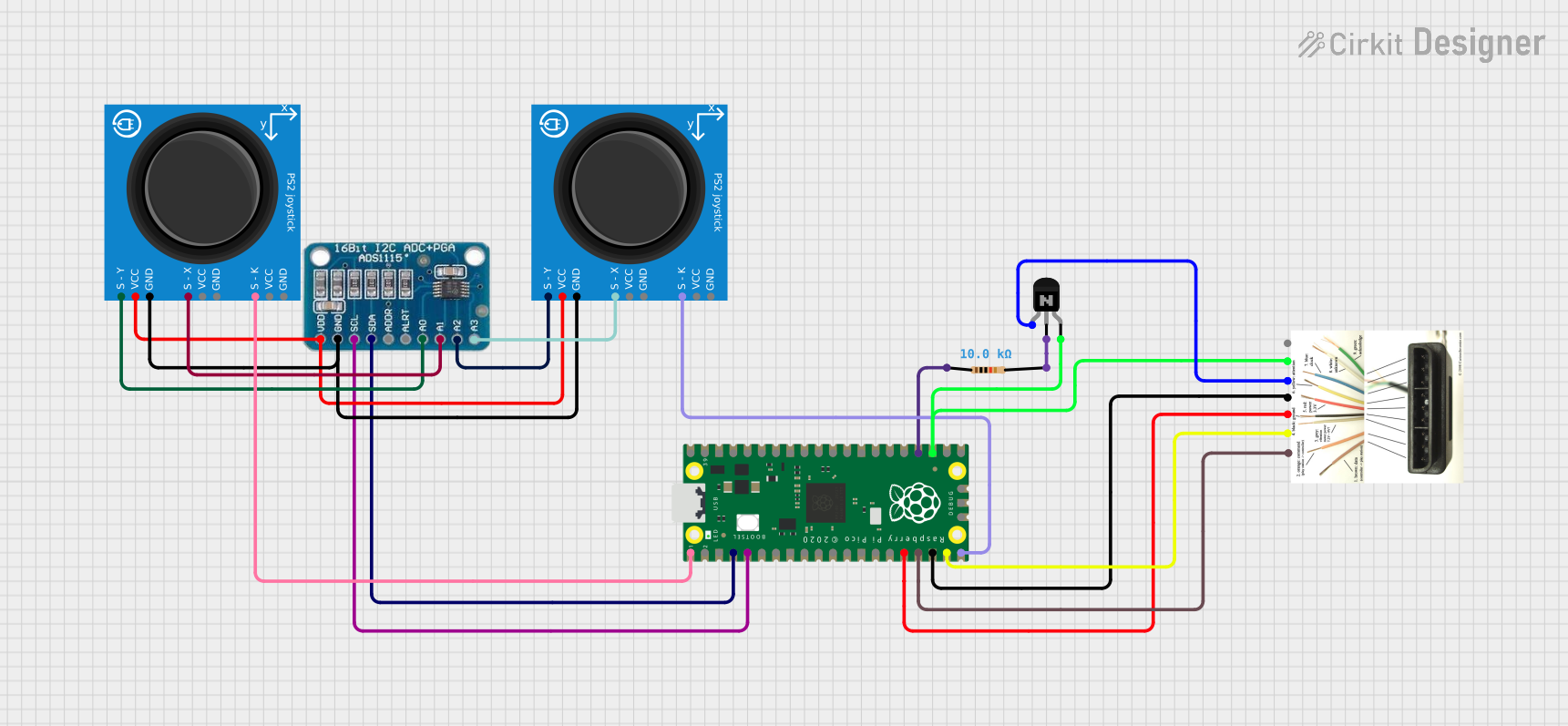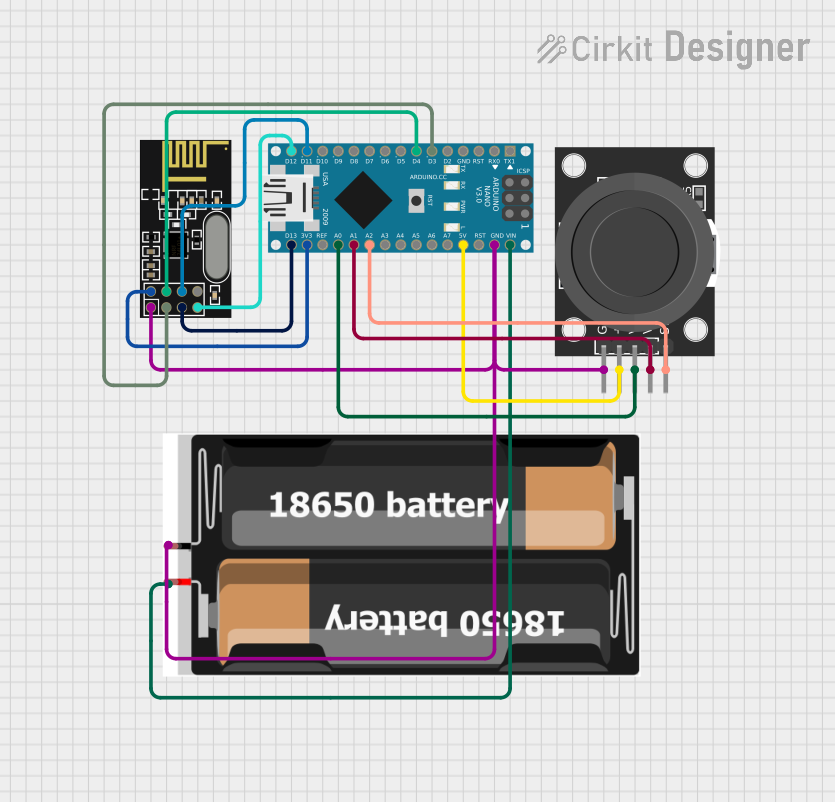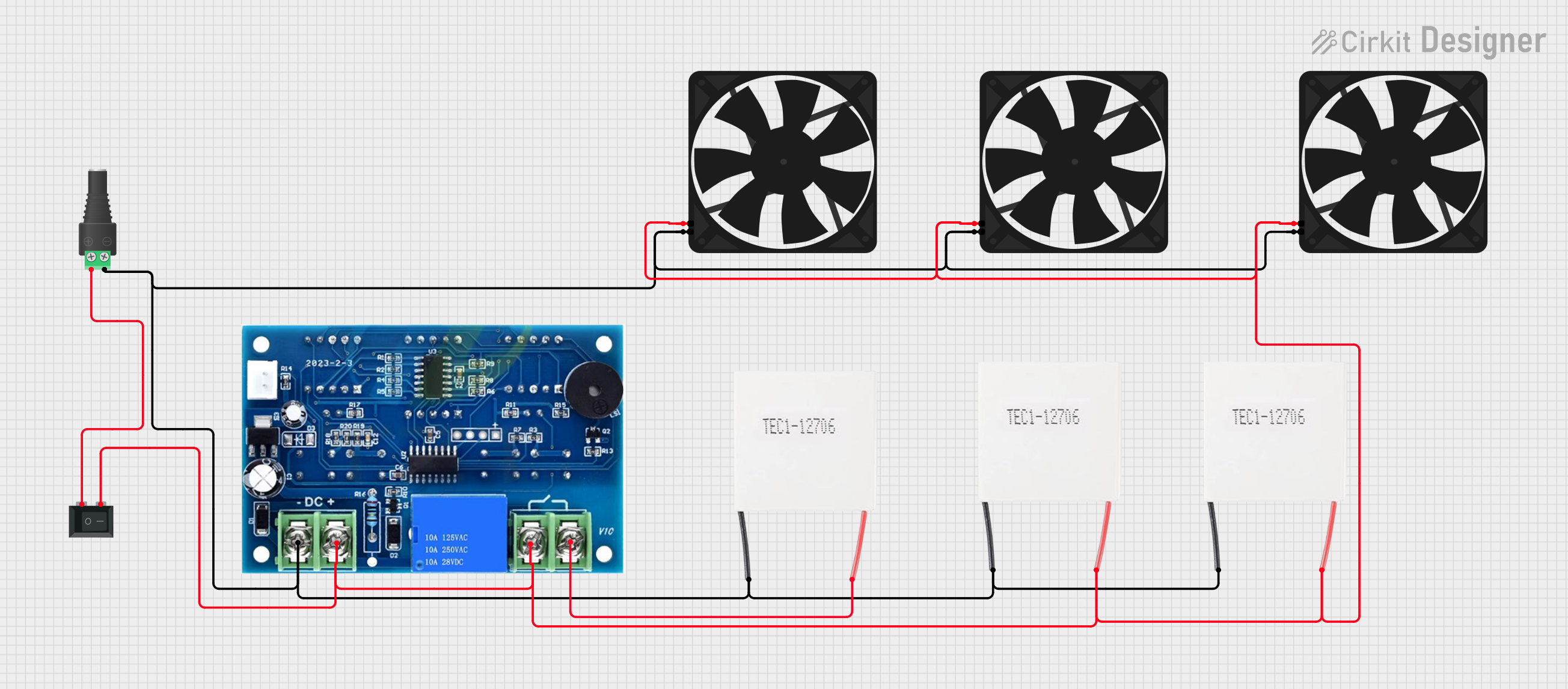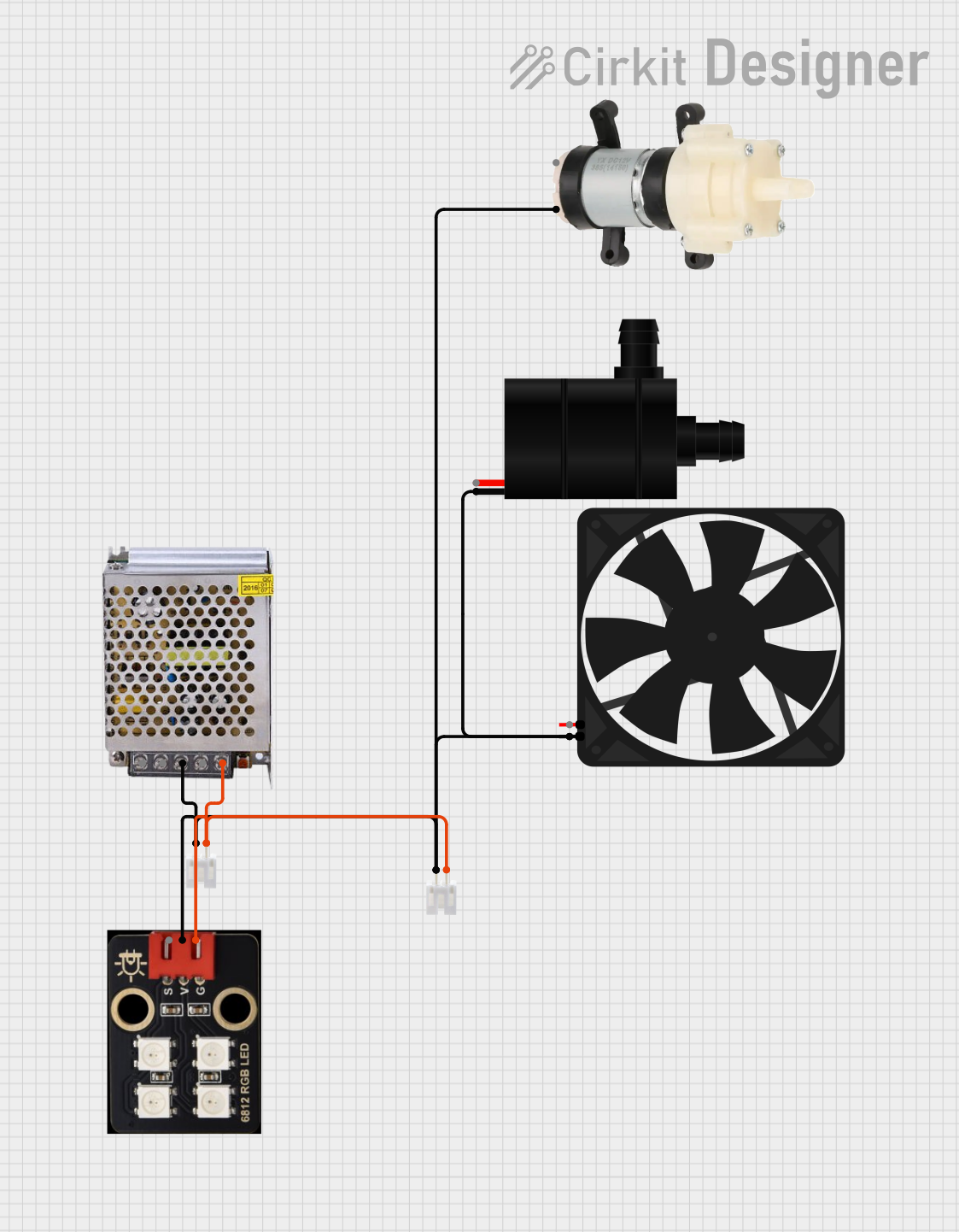
How to Use JST female 2P: Examples, Pinouts, and Specs

 Design with JST female 2P in Cirkit Designer
Design with JST female 2P in Cirkit DesignerIntroduction
The JST Female 2P connector is a 2-pin female connector designed for secure and reliable electrical connections in electronic circuits. It is widely used in applications requiring compact, durable, and easy-to-use connectors. The connector typically features a locking mechanism that ensures a firm connection, preventing accidental disconnection during operation. Its small size and robust design make it ideal for use in battery connections, LED strips, RC vehicles, and other low-power electronic devices.
Explore Projects Built with JST female 2P

 Open Project in Cirkit Designer
Open Project in Cirkit Designer
 Open Project in Cirkit Designer
Open Project in Cirkit Designer
 Open Project in Cirkit Designer
Open Project in Cirkit Designer
 Open Project in Cirkit Designer
Open Project in Cirkit DesignerExplore Projects Built with JST female 2P

 Open Project in Cirkit Designer
Open Project in Cirkit Designer
 Open Project in Cirkit Designer
Open Project in Cirkit Designer
 Open Project in Cirkit Designer
Open Project in Cirkit Designer
 Open Project in Cirkit Designer
Open Project in Cirkit DesignerCommon Applications
- Battery connections in small electronic devices
- LED strip wiring
- Remote-controlled (RC) vehicles and drones
- Low-power motor connections
- Prototyping and DIY electronics projects
Technical Specifications
The following table outlines the key technical details of the JST Female 2P connector:
| Parameter | Specification |
|---|---|
| Connector Type | JST Female 2P |
| Number of Pins | 2 |
| Current Rating | Up to 3A |
| Voltage Rating | Up to 250V |
| Wire Gauge Support | 22-28 AWG |
| Material | Plastic housing, metal contacts |
| Locking Mechanism | Yes |
| Operating Temperature | -25°C to 85°C |
Pin Configuration and Descriptions
The JST Female 2P connector has two pins, typically used for power and ground connections. The pin configuration is as follows:
| Pin Number | Description | Typical Use |
|---|---|---|
| 1 | Positive (+) Terminal | Power supply (VCC) |
| 2 | Negative (-) Terminal | Ground (GND) |
Usage Instructions
How to Use the JST Female 2P Connector in a Circuit
- Prepare the Wires: Strip the insulation from the ends of the wires you intend to connect, ensuring the exposed length matches the connector's crimp terminals.
- Crimp the Terminals: Use a crimping tool to attach the metal terminals to the stripped wire ends. Ensure a secure and firm crimp for reliable conductivity.
- Insert the Terminals: Push the crimped terminals into the connector housing until they click into place. The locking mechanism will secure the terminals.
- Connect to the Male Counterpart: Align the JST Female 2P connector with its male counterpart and push them together until the locking mechanism engages.
- Verify the Connection: Gently tug on the wires to ensure the connection is secure and will not disconnect accidentally.
Important Considerations and Best Practices
- Wire Gauge: Use wires within the supported range (22-28 AWG) to ensure proper fit and electrical performance.
- Crimping Tool: Always use a compatible crimping tool for the terminals to avoid loose or unreliable connections.
- Polarity: Double-check the polarity of the connections (positive and negative terminals) to prevent damage to your circuit.
- Locking Mechanism: Ensure the locking mechanism is engaged to prevent accidental disconnection during operation.
- Current and Voltage Ratings: Do not exceed the specified current (3A) and voltage (250V) ratings to avoid overheating or damage.
Example: Connecting to an Arduino UNO
The JST Female 2P connector can be used to power an Arduino UNO from a battery pack. Below is an example of how to connect a 7.4V LiPo battery to the Arduino UNO using the JST Female 2P connector.
Circuit Diagram
- Pin 1 (Positive): Connect to the Arduino's VIN pin.
- Pin 2 (Negative): Connect to the Arduino's GND pin.
Sample Code
// Example code to blink an LED connected to pin 13 on the Arduino UNO
// Ensure the Arduino is powered via the JST Female 2P connector
void setup() {
pinMode(13, OUTPUT); // Set pin 13 as an output
}
void loop() {
digitalWrite(13, HIGH); // Turn the LED on
delay(1000); // Wait for 1 second
digitalWrite(13, LOW); // Turn the LED off
delay(1000); // Wait for 1 second
}
Troubleshooting and FAQs
Common Issues and Solutions
Loose Connection
- Issue: The connector feels loose or disconnects easily.
- Solution: Ensure the crimped terminals are fully inserted into the housing and the locking mechanism is engaged.
Incorrect Polarity
- Issue: The circuit does not work or components are damaged.
- Solution: Double-check the polarity of the connections before powering the circuit.
Overheating
- Issue: The connector or wires become hot during operation.
- Solution: Verify that the current and voltage do not exceed the connector's ratings. Use thicker wires if necessary.
Crimping Issues
- Issue: The wires are not securely attached to the terminals.
- Solution: Use a proper crimping tool and ensure the wire is stripped to the correct length.
FAQs
Q: Can I solder wires directly to the JST Female 2P connector?
- A: While it is possible, it is not recommended as it may damage the plastic housing. Crimping is the preferred method.
Q: Is the JST Female 2P connector waterproof?
- A: No, the standard JST Female 2P connector is not waterproof. Use additional sealing methods if water resistance is required.
Q: Can I use the JST Female 2P connector for high-power applications?
- A: No, the connector is designed for low-power applications with a maximum current rating of 3A.
Q: How do I remove the terminals from the housing?
- A: Use a small flathead screwdriver or a terminal removal tool to release the locking tab and gently pull out the terminal.
This concludes the documentation for the JST Female 2P connector.